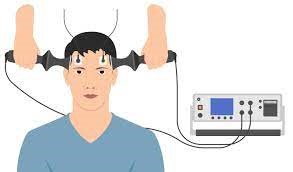An RN is observing a licensed practical nurse (LPN) and an assistive personnel (AP) move a client up in bed. For which of the following situations should the nurse intervene?
The LPN and AP lower the side rails before lifting the client up in bed.
Prior to lifting the client, the LPN and AP raise the bed to waist level.
The LPN and the AP grasp the client under his arms to lift him up in bed.
The LPN and the AP ask the client to flex his knees and push his heels into the bed as they lift.
The Correct Answer is C
A. The LPN and AP lower the side rails before lifting the client up in bed is incorrect. This is a safe practice that prevents injury to the client and staff by providing more space for movement and reducing the risk of falling.
B. Prior to lifting the client, the LPN and AP raise the bed to waist level is incorrect. This is a safe practice that prevents injury to the client and staff by reducing the need for bending and lifting.
C. The LPN and the AP grasp the client under his arms to lift him up in bed is correct. This is an unsafe practice that can cause injury to the client's shoulders, neck, and axillae by applying excessive pressure and friction. The LPN and AP should use a draw sheet or a mechanical lift device to move the client up in bed.
D. The LPN and the AP ask the client to flex his knees and push his heels into the bed as they lift is incorrect. This is a safe practice that encourages active participation from the client and reduces the workload for the staff by using leverage.
Nursing Test Bank
Naxlex Comprehensive Predictor Exams
Related Questions
Correct Answer is B
Explanation
A. "Perhaps you think the ECT is dangerous, but I've seen it have good results." This response is dismissive of the client's concerns and implies that the nurse knows better than the client.
B. "You have the right to change your mind about this procedure at any time." This response respects the client's autonomy and informs them of their rights.
C. "Everyone gets a little nervous about this procedure as the time for it approaches." This response minimizes the client's feelings and assumes that they are experiencing normal anxiety.
D. "Your doctor wouldn't have suggested ECT if they didn't think it would help you." This response shifts the responsibility to the doctor and does not address the client's fears.

Correct Answer is D
Explanation
A. This choice is incorrect because verapamil and TPN do not have a significant food and medication interaction. Verapamil is a calcium channel blocker that can lower blood pressure and heart rate, while TPN is a form of intravenous nutrition that provides calories, electrolytes, vitamins, and minerals. The nurse should monitor the client's vital signs and blood glucose levels, but there is no need to intervene to prevent an interaction.
B. This choice is incorrect because phenytoin and milkshakes do not have a significant food and medication interaction. Phenytoin is an anticonvulsant that can decrease the absorption of some vitamins, such as folic acid and vitamin D, but milkshakes are not a major source of these nutrients. The nurse should encourage the client to eat a balanced diet and take supplements as prescribed, but there is no need to intervene to prevent an interaction.
C. This choice is incorrect because potassium-rich foods and furosemide do not have a significant food and medication interaction. Furosemide is a loop diuretic that can cause hypokalemia, or low potassium levels, but potassium-rich foods can help prevent this complication. The nurse should monitor the client's electrolyte levels and fluid balance, but there is no need to intervene to prevent an interaction.
D. This choice is correct because MAOIs and cheeseburgers have a significant food and medication interaction. MAOIs are antidepressants that can cause hypertensive crisis, or dangerously high blood pressure, if the client consumes foods that contain tyramine, such as aged cheeses, cured meats, fermented foods, and beer. The nurse should intervene to prevent the client from eating a cheeseburger and educate the client about avoiding tyramine-containing foods while taking MAOIs.
Whether you are a student looking to ace your exams or a practicing nurse seeking to enhance your expertise , our nursing education contents will empower you with the confidence and competence to make a difference in the lives of patients and become a respected leader in the healthcare field.
Visit Naxlex, invest in your future and unlock endless possibilities with our unparalleled nursing education contents today
Report Wrong Answer on the Current Question
Do you disagree with the answer? If yes, what is your expected answer? Explain.
Kindly be descriptive with the issue you are facing.
